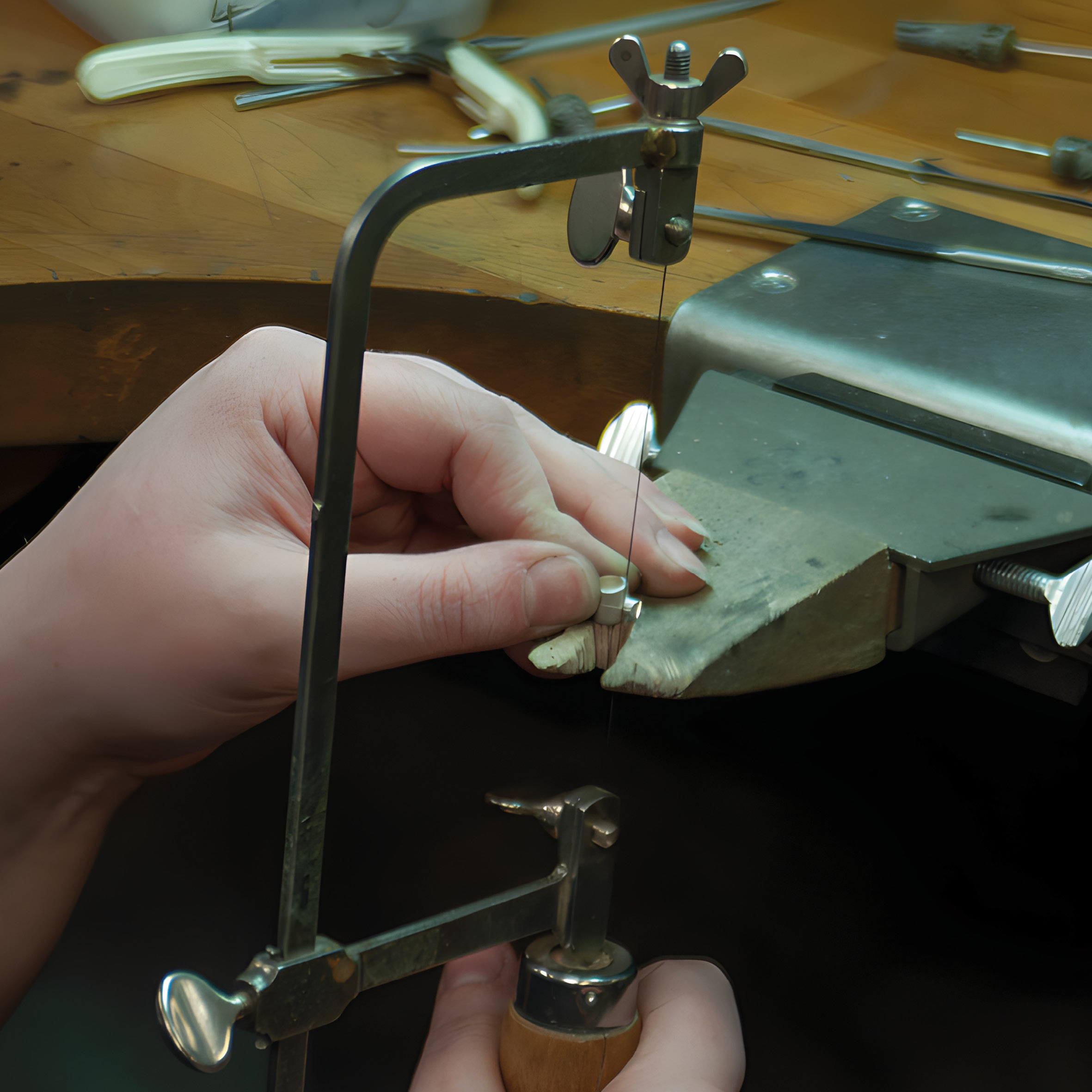Crafting our pendants
Our founder Ollie works closely with a team of UK-based designers and manufacturers to create Remember’s unique range of jewellery.

Stage 1 | Design
Remember pendants have a special requirement: as well as being beautiful, they need to meet specific technical criteria to ensure that the hidden photo will be visible when held up to the light. They’re as much an optical device as they are a piece of jewellery.
In collaboration with Ollie, our designers prepare concept sketches. Selected designs are then turned into precise technical drawings.

A range of computer-generated technical drawings
Stage 2 | Prototypes
From the technical drawings, 3-D-printed prototypes are produced and evaluated. The drawings are adjusted and the 3-D prototypes remade until Ollie is happy with the designs.

A 3-D printed prototype of our Aura pendant
Stage 3 | Casting
From the finalised designs casts are created. Our sterling silver jewellery is cast in small batches by our casting house at their workshop in Leicester. Gold pieces are made to order.
Stage 4 | Finishing and hallmarking
When removed from the casts, the jewellery is polished and checked for scratches and flaws.
Gold pieces, and any sterling silver pieces that weigh more than 7.78g, are sent to the Sheffield Assay Office to be hallmarked, before being delivered to the Remember workshop.
Crafting our pendants
Our founder Ollie works closely with a team of UK-based designers and manufacturers to create Remember’s unique range of jewellery.

Stage 1 | Design
In collaboration with Ollie, our designers prepare concept sketches. Selected designs are worked up into precise technical drawings.
Remember pendants have a special requirement: as well as being beautiful, they need to meet specific technical criteria to ensure that the hidden photo will be visible when held up to the light. They’re as much an optical device as they are a piece of jewellery.
Stage 2 | Prototypes
Once the technical drawings have been created, 3-D-printed prototypes are produced and evaluated. The drawings are adjusted and the prototypes remade until Ollie is happy.

A 3-D prototype of our AURA pendant
Stage 3 | Casting
Our Heirloom collection is cast by Vipa Designs at their Leicester workshop. Pendants are made one at a time by the lost wax method.
First, Vipa create steel versions of the jewellery known as ‘masters’. Each piece has a long cylindrical bar attached, called a ‘sprue’. This creates a channel in the plaster mould into which the molten metal will be poured.

Masters for the AURA pendant, which is cast two parts
Before casting can take place, the masters are used to create rubber moulds. These are then used to make wax versions of the jewellery, one for each piece to be cast.

Wax forms of the two parts of the AURA pendant
Each wax form is suspended in a metal canister and liquid plaster poured in around it. After it has set, the plaster is baked in a kiln to harden it and temper it for casting. During this process the wax melts and runs away to create a void into which the molten metal will flow.
The plaster cast is then fitted into a special casting machine. Pieces of gold or silver are placed in the machine’s crucible. The lid of the machine is closed, the metal heated to the correct temperature, and then the casting chamber is rotated so that the molten metal pours into the cast.

The casting chamber is tilted to allow hot metal to flow into the plaster mould
The cast is left to cool for a certain amount of time, before being plunged into water. This shocks the plaster and shatters it, allowing the cast jewellery to be extracted.
Stage 4 | Finishing and hallmarking
Once removed from its cast, the jewellery needs to have its sprue sawn off, before being polished with successively finer grades of abrasive.

Parts for the AURA cast in silver ready for finishing

Sawing off the sprue

Using a fine-grade file to clean and polish the silver

The polished parts of the AURA ready to be soldered
In some cases (such as with our AURA pendant) the jewellery is cast in two parts which have to be soldered together, before being given a final polish.

The two parts of the AURA being fitted together

Heating the parts to solder them together
Gold pieces, and any sterling silver pieces that weigh more than 7.78g, are sent to the Sheffield Assay Office to be hallmarked, before being delivered to the Remember workshop.
4.8 Stars on Trustpilot - read our reviews
Bestsellers
Stage 1 | Design
In collaboration with Ollie, our designers prepare concept sketches. Selected designs are worked up into precise technical drawings.
Remember pendants have a special requirement: as well as being beautiful, they need to meet specific technical criteria to ensure that the hidden photo will be visible when held up to the light. They’re as much an optical device as they are a piece of jewellery.
Stage 2 | Prototypes
Once the technical drawings have been created, 3-D-printed prototypes are produced and evaluated. The drawings are adjusted and the prototypes remade until Ollie is happy.
Stage 3 | Casting
Our Heirloom collection is cast by Vipa Designs at their Leicester workshop. Pendants are made one at a time by the lost wax method.
First, Vipa create steel versions of the jewellery known as ‘masters’. Each piece has a long cylindrical bar attached, called a ‘sprue’. This creates a channel in the plaster mould into which the molten metal will be poured.
Before casting can take place, the masters are used to create rubber moulds. These are then used to make wax versions of the jewellery, one for each piece to be cast.
Each wax form is suspended in a metal canister and liquid plaster poured in around it. After it has set, the plaster is baked in a kiln to harden it and temper it for casting. During this process the wax melts and runs away to create a void into which the molten metal will flow.
The plaster cast is then fitted into a special casting machine. Pieces of gold or silver are placed in the machine’s crucible. The lid of the machine is closed, the metal heated to the correct temperature, and then the casting chamber is rotated so that the molten metal pours into the cast.
The cast is left to cool for a certain amount of time, before being plunged into water. This shocks the plaster and shatters it, allowing the cast jewellery to be extracted.
Stage 4 | Finishing and hallmarking
Once removed from its cast, the jewellery needs to have its sprue sawn off, before being polished with successively finer grades of abrasive.
In some cases (such as with our AURA pendant) the jewellery is cast in two parts which have to be soldered together, before being given a final polish.
Gold pieces, and any sterling silver pieces that weigh more than 7.78g, are sent to the Sheffield Assay Office to be hallmarked, before being delivered to the Remember workshop.

A 3-D prototype of our AURA pendant

The AURA is cast in two parts

The polished parts are fitted together






















